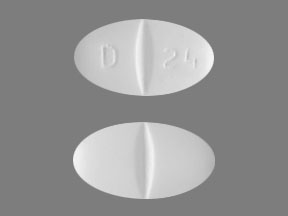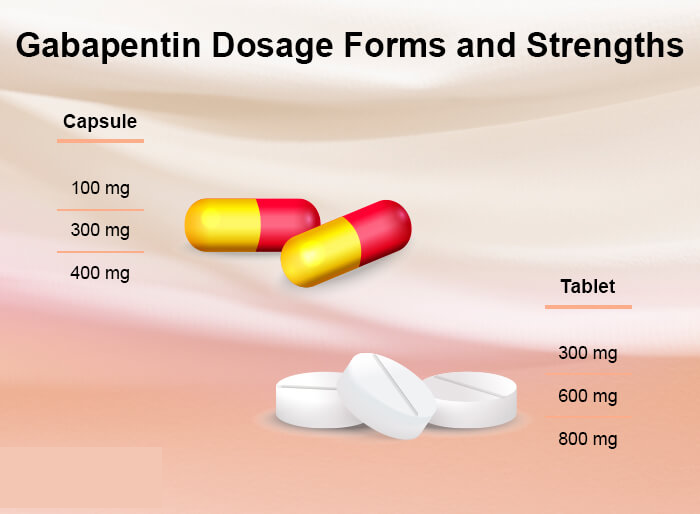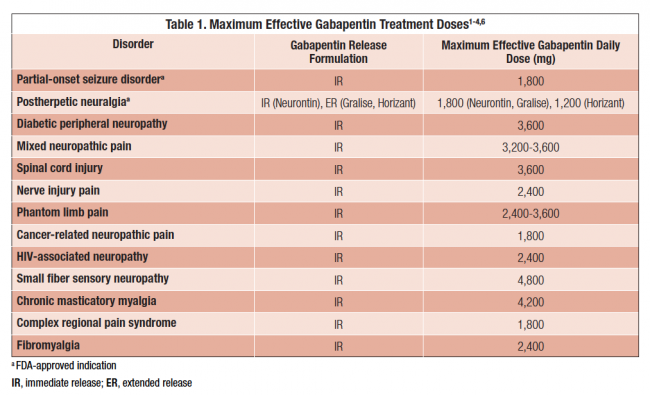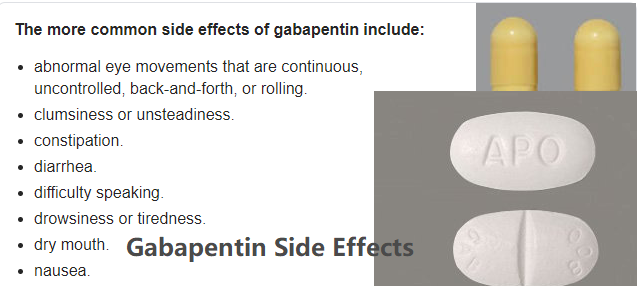What is Gabapentin ?
Gabapentin is used to treat epilepsy.
It’s also taken for nerve pain, which can be caused by different conditions, including diabetes and shingles. Nerve pain can also happen after an injury.
In epilepsy, it’s thought that gabapentin stops seizures by reducing the abnormal electrical activity in the brain. With nerve pain, it’s thought to block pain by affecting the pain messages travelling through the brain and down the spine.
Gabapentin is available on prescription. It comes as tablets, capsules and a liquid that you swallow.
How to Buy Gabapentin 400mg Online?
Gabapentin target is the treatment of seizures. Generic Gabapentin can also be used to relieve the pain of diabetic neuropathy and postherpetic neuralgia. It is taken to prevent and treat hot flashes in women with menopause or breast cancer.
Gabapentin is an anticonvulsant or antiepileptic drug that is used alongside other medications to control and prevent seizures. It is also used to help relieve nerve pain a patient experiences following shingles (a painful rash due to herpes zoster infection) in adults. Is the generic version as good as the brand version?
Gabapentin is the generic version of Neurontin, and requires a prescription. All generic medications sold through Blink Health are FDA-approved. All FDA-approved generics must have the same strength, dosage form, safety and effectiveness as their brand-name counterparts.
Generic Gabapentin can be used together with other seizures medicines. Generic Gabapentin is acting by affecting certain nerves and chemicals which cause seizures and pain. It is anticonvulsant. Generic name of Generic Gabapentin is Gabapentin. Brand names of Neurontin are Gabapentin, Gabarone.

How to Use Gabapentin ?
It’s important to read the Medication Guide and, if available, the Patient Information Leaflet provided by your pharmacist, before you begin taking Gabapentin and each time you get a refill. If you have any questions, ask your clinician or pharmacist.
Take Gabapentin by mouth, either with or without food as directed by your licensed medical professional. Your dosage is based on your medical condition, as well as your response to treatment. In children, the dosage is also based on their weight.
If you are taking the tablet form of Gabapentin and your licensed medical professional directs you to split the tablet in half, take the other half-tablet at your next scheduled dose. Be sure to discard remaining half-tablets if you haven’t used them within 28 days of splitting them. If you are taking the capsules, always swallow them whole with plenty of water.
It is very important to follow your licensed medical professional’s dosing instructions exactly. During the first few days taking Gabapentin, your licensed medical professional may gradually increase your dose so that your body can adjust to the medication.
To minimize the occurrence of side effects, take the very first dose at bedtime. To get the most benefit, take this medication regularly. Gabapentin will work best when the amount of medication in your body is kept at a constant level.
Therefore, take gabapentin at evenly spaced intervals at the same time(s) every day as prescribed. If taking this medication three times per day to control seizures, do not let more than 12 hours pass between doses, or you may increase the risk of having a seizure. Do not increase your dose or take this medication more frequently without consulting your licensed medical professional. Your risk of serious side effects can increase, and your condition will not improve any faster.
Do not stop taking this medication without consulting your licensed medical professional. Some conditions can become worse when gabapentin is stopped suddenly. If you wish to stop taking gabapentin, your dose may need to be gradually decreased.
Antacids containing aluminum or magnesium may interfere with the absorption of this medication. Therefore, if you are also taking an antacid, it is best to take gabapentin at least 2 hours after taking the antacid. Different forms of gabapentin (such as immediate-release, sustained-release, enacarbil sustained-release) are absorbed in the body differently.
Do not switch from one form to the other without consulting your licensed medical professional. Tell your licensed medical professional if your condition does not improve or if it worsens.

What You Must Know Before You Buy Gabapentin Online
It’s also important to be aware of precautions and warnings around taking this medication.
Before taking gabapentin, tell your doctor or pharmacist if you are allergic to it; or to gabapentin enacarbil; or if you have any other allergies. This product may contain inactive ingredients, which can cause allergic reactions or other problems. Talk to your pharmacist for more details.
Before using this medication, tell your doctor or pharmacist your medical history, especially of: kidney disease, mental/mood problems (such as depression, thoughts of suicide), use/abuse of drugs/alcohol, breathing problems.
This drug may make you dizzy or drowsy or blur your vision. Alcohol or marijuana (cannabis) can make you more dizzy or drowsy. Do not drive, use machinery, or do anything that needs alertness or clear vision until you can do it safely. Limit alcoholic beverages. Talk to your doctor if you are using marijuana (cannabis).
Before having surgery, tell your doctor or dentist about all the products you use (including prescription drugs, nonprescription drugs, and herbal products).
Older adults may be more sensitive to the side effects of this drug, especially swelling of the hands/ankles/feet, slow/shallow breathing, dizziness, or loss of coordination. Dizziness and loss of coordination can increase the risk of falling.

Children may be more sensitive to the side effects of this drug, especially mental/mood/behavior changes (such as hostility, problems concentrating, restlessness).
During pregnancy, this medication should be used only when clearly needed. Discuss the risks and benefits with your doctor.
Gabapentin passes into breast milk. Consult your doctor before breast-feeding.
Gabapentin Dosage and Form


Each capsule of gabapentin contains 100mg, 300mg or 400mg of gabapentin. Each tablet contains 600mg or 800mg of gabapentin. Generic Gabapentin is available in:
-
- 300mg Low Dosage400mg Standard Dosage
- 600mg Gabapetnin and 800mg Gabapentin
Generic Gabapentin is available in tablets, liquid form and capsules(300 mg, 400 mg). The dosage of Generic Gabapentin depends on the type of your disease and health state.If you’re taking gabapentin as a liquid, 2ml is usually the same as taking a 100mg tablet or capsule. Always check the label.
Take Generic Gabapentin tablets, liquid form and capsules orally at the same time every day with water.
Generic Gabapentin can be used together with other seizures medicines. Take Generic Gabapentin 3 times a day with or without food. If you want to achieve most effective results do not stop taking Generic Gabapentin suddenly.
Dosage for epilepsy
The usual dose for:
-
- adults and older children (aged 12 and over) is 900mg to 3,600mg a day, split into 3 doses
- younger children (aged 6 to 12) – varies depending on their weight
Dosage for nerve pain
-
- The usual dose to treat nerve pain in adults is 900mg to 3,600mg a day, split into 3 doses.
Changes to your dose
To prevent side effects, your doctor will prescribe a low dose to start with and then increase it over a few days. Once you find a dose that suits you, it will usually stay the same.
How to Take Gabapentin ?
Swallow gabapentin capsules and tablets whole with a drink of water or juice. Do not chew them. You can take gabapentin with or without food, but it’s best to do the same each day.
Try to space your doses evenly through the day. For example, you could take it first thing in the morning, early afternoon and at bedtime.
If you or your child are taking a liquid, it will come with a plastic syringe or spoon to measure your dose. If you do not have a syringe or spoon, ask your pharmacist for one. Do not use a kitchen spoon, as it will not measure the right amount.
How Long to Take it For ?
If you have epilepsy, it’s likely that once your condition is under control you’ll still need to take gabapentin for many years. If you have nerve pain, once your pain has gone you’ll continue to take gabapentin for several months or longer to stop it coming back.
Mechanism of Action of Gabapentin
The precise mechanism through which gabapentin exerts its therapeutic effects is unclear. The primary mode of action appears to be at the auxillary α2δ-1 subunit of voltage-gated calcium channels (though a low affinity for the α2δ-2 subunit has also been reported).

The major function of these subunits is to facilitate the movement of pore-forming α1 subunits of calcium channels from the endoplasmic reticulum to the cell membrane of pre-synaptic neurons. There is evidence that chronic pain states can cause an increase in the expression of α2δ subunits and that these changes correlate with hyperalgesia.
Gabapentin appears to inhibit the action of α2δ-1 subunits, thus decreasing the density of pre-synaptic voltage-gated calcium channels and subsequent release of excitatory neurotransmitters. It is likely that this inhibition is also responsible for the anti-epileptic action of gabapentin.
There is some evidence that gabapentin also acts on adenosine receptors and voltage-gated potassium channels, though the clinical relevance of its action at these sites is unclear.
Gabapentin Missing of Dose
Do not take double dose. If you miss a dose you should take it as soon as you remember about your missing. If it is the time for the next dose you should continue your regular dosing schedule.
Gabapentin Overdose
If you overdose Generic Gabapentin and you don’t feel good you should visit your doctor or health care provider immediately. Symptoms of Generic Gabapentin overdosage: feeling drowsy, double vision, slurred speech, diarrhea, difficulties with breathing, problems with coordination.
Symptoms of gabapentin overdose may include: severe drowsiness, slurred speech, weakness. If someone has overdosed and has serious symptoms such as passing out or trouble breathing, call 911. Otherwise, call a poison control center immediately. US residents can call their local poison control center at 1-800-222-1222. Canada residents can call a provincial poison control center.
Stopping Gabapentin
It’s important not to stop taking gabapentin suddenly, even if you feel fine. Stopping gabapentin suddenly can cause serious problems.
If you have epilepsy, stopping gabapentin suddenly can cause seizures that will not stop.
If you’re taking it for any reason and stop suddenly, you may have a severe withdrawal syndrome. This can have unpleasant symptoms, including:
-
- anxiety
- difficulty sleeping
- feeling sick
- pain
- sweating
It’s possible to prevent withdrawal seizures and other symptoms by gradually reducing the dose of gabapentin.
Do not stop taking gabapentin without talking to your doctor – you’ll need to reduce your dose gradually.
Gabapentin Side Effects
Gabapentin has its side effects.

Get emergency medical help if you have signs of an allergic reaction to gabapentin: hives; difficult breathing; swelling of your face, lips, tongue, or throat.
Seek medical treatment if you have a serious drug reaction that can affect many parts of your body. Symptoms may include: skin rash, fever, swollen glands, flu-like symptoms, muscle aches, severe weakness, unusual bruising, or yellowing of your skin or eyes. This reaction may occur several weeks after you began using gabapentin.
Report any new or worsening symptoms to your doctor, such as: mood or behavior changes, anxiety, panic attacks, trouble sleeping, or if you feel impulsive, irritable, agitated, hostile, aggressive, restless, hyperactive (mentally or physically), depressed, or have thoughts about suicide or hurting yourself.
Call your doctor at once if you have:
-
-
- increased seizures;
- fever, rash, and/or swollen lymph nodes;
- severe weakness or tiredness;
- problems with balance or muscle movement;
- upper stomach pain;
- chest pain, new or worsening cough with fever, trouble breathing;
- severe tingling or numbness;
- rapid eye movement; or
- kidney problems – little or no urination, painful or difficult urination, swelling in your feet or ankles.
-
Some side effects are more likely in children taking gabapentin. Contact your doctor if the child taking this medicine has any of the following side effects:
-
-
- changes in behavior;
- memory problems;
- trouble concentrating; or
- acting restless, hostile, or aggressive.
-
Common gabapentin side effects may include:
-
-
- headache, dizziness, drowsiness, tiredness;
- swelling in your hands or feet;
- problems with your eyes;
- coordination problems; or
- (in children) fever, nausea, vomiting.
-
This is not a complete list of side effects and others may occur. Call your doctor for medical advice about side effects. You may report side effects to FDA at 1-800-FDA-1088.
Gabapentin Contra-indications
Do not take Generic Gabapentin if you are allergic to Generic Gabapentin components.
Do not take Generic Gabapentin if you are pregnant, planning to become pregnant. Avoid breast-feeding.
Be careful with Generic Gabapentin if you are taking morphine (such as MSIR, Avinza, Kadian), hydrocodone (in Vicodin, in Hydrocet), naproxen (such as Anaprox, Aleve, Naprosyn).
Generic Gabapentin can be used together with other seizures medicines.
Be very careful with Generic Gabapentin if you suffer from or have a history of heart, kidney or liver disease.
Be careful with Generic Gabapentin if you are going to have a surgery.
Children should be very careful with Generic Gabapentin because it can cause changes in behavior.
If you experience drowsiness and dizziness while taking Generic Gabapentin you should avoid any activities such as driving or operating machinery.
Avoid alcohol.
It can be dangerous to stop Generic Gabapentin taking suddenly.
Gabapentin Frequently asked questions
Q: What does Generic Gabapentin mean?
A: Generic Gabapentin is the medication of high quality, which is taken in treatment of seizures. Generic Gabapentin can also be used to relieve the pain of diabetic neuropathy and postherpetic neuralgia. It is taken to prevent and treat hot flashes in women with menopause or breast cancer. Generic Gabapentin can be used together with other seizures medicines.
Q: What is the target?
A: The target of this perfect remedy is the treatment of seizures. Generic Gabapentin can also be used to relieve the pain of diabetic neuropathy and postherpetic neuralgia. It is taken to prevent and treat hot flashes in women with menopause or breast cancer.
Q: What are generic and brand names of Generic Gabapentin?
A: The brand names of Generic Gabapentin are Gabapentin, Gabarone. The generic name of Generic Gabapentin is Gabapentin.
Q: In what way does Generic Gabapentin operate?
Key Factors
-
- You’ll usually take Gabapentin 3 times a day. You can take it with or without food.
- Most people who take Gabapentin do not get any side effects. But some people may feel sleepy, tired and dizzy. Common side effects are usually mild and go away by themselves.
- It takes at least a few weeks for Gabapentin to work.
- Most people do not have to stay on the same brand of Gabapentin as there’s very little difference between brands.
- Some people can become addicted to Gabapentin. When stopping Gabapentin you’ll need to reduce your dose gradually to avoid withdrawal symptoms.
- If you have epilepsy, you are entitled to free prescriptions for all the medicines you take, not just your epilepsy ones. You can get an application form from your doctor’s surgery.
Gabapentin Drug Interaction
Drug interactions can change how gabapentin and your other medications work, or even increase your risk for serious side effects. This document does not contain all possible drug interactions. Be sure to keep a list of all the products you use (including prescription and nonprescription drugs, as well as herbal products) and share it with your clinician and pharmacist. Do not start, stop, or change the dosage of any medicines without your licensed medical professional’s approval.

A product that may interact with gabapentin: orlistat.
Tell your clinician or pharmacist if you use other products that cause drowsiness, like drugs for sleep or anxiety (such as alprazolam, lorazepam, zolpidem), opioid pain or cough relievers (such as codeine, hydrocodone), antihistamines (such as cetirizine, diphenhydramine), muscle relaxants (such as carisoprodol, cyclobenzaprine), alcohol or marijuana (cannabis).

Be sure to also check the labels on all of your medications (including cough-and-cold or allergy products) because they may contain ingredients that cause drowsiness. Ask your pharmacist about using those medications safely.
Do not use this medication with other medications that contain gabapentin (including gabapentin enacarbil).
Gabapentin may interfere with certain laboratory tests for urine protein. Make sure laboratory personnel and all your licensed medical professionals know you use this drug.
A: Generic Gabapentin is acting by affecting certain nerves and chemicals which cause seizures and pain. It is anticonvulsant.
- Gabapentin 100mg, Ascend Laboratories, 216 Pill – white capsule/oblong, 14mm
- Gabapentin 300 mg Strides Shasun, AHD 300 Pill – brown & yellow capsule/oblong, 19mm
- Gabapentin 100 mg, Aurobindo D 02 Pill – white capsule/oblong, 16mm
- Gabapentin 600 mg ScieGen NT 150 Pill – white oval
- Gabapentin 100 mg ScieGen Pharmaceuticals SG 179 Pill – white capsule/oblong, 16mm
- Gabapentin 100 mg IG321 Pill InvaGen Pharmaceuticals, Inc. – white capsule/oblong, 16mm
- Gabapentin 800 mg ScieGen Pharmaceuticals SG 1 78 Pill – white capsule/oblong, 19mm
- Gabapentin 800mg – G 13 Pill, Glenmark Generics Inc. – white oval, 19mm
- Gabapentin 100mg, Amneal Pharmaceuticals, IP 101 IP 101 Pill – white capsule/oblong, 16mm
- Gabapentin 600 mg ScieGen Pharmaceuticals SG 77 Pill – white capsule/oblong, 18mm
- Gabapentin 300mg, InvaGen Pharmaceuticals, IG322 300 mg Pill – yellow capsule/oblong
- Gabapentin 600mg, Aurobindo Pharma USA, D 24 Pill – white oval
- Gabapentin 300mg, Ascend Laboratories, 215 Pill – Yellow Capsule/Oblong
- What are the Ingredients in Gabapentin ?
- Gabapentin May Cause Serious or Life-Threatening Allergic Reactions
- Gabapentin – Dosage information for RLS, Epilepsy and Postherpetic Neuralgia
- Suicidal Thoughts After Taking Gabapentin
- Is Gabapentin Addictive ?
- Gabapentin Usage for Alcohol Disorder and Alcohol Withdrawal
- Gabapentin is used for Restless legs syndrome
- Gabapentin is Used for Neuropathic Pain (other than Postherpetic Neuralgia)
- Gabapentin Pharmacology
- Gabapentin Side Effects For Healthcare Professionals
- Gabapentin Side Effects
- Gabapentin Risks during Pregnancy and when Breastfeeding
- Gabapentin Drug Interaction
- Where to buy Neurontin?
- How does Gabapentin Work ?
Gabapentin Marketing Information
Gabapentin is sold in pharmcies as “Neurontin”. It is also possible to purchase Neurontin in online store. Gabapentin also can be sold as: Abaglin, Algia, Alidial, Alpentin, Apoab, Bapex, Blugat, Bosrontin, Brilian, Dineurin, Edion, Epiven, Epleptin, Equipax, Gabadoz, Gabagamma, Gabahasan, Gabahexal, Gabalept, Gabalich, Gabamerck, Gabanet, Gabaneural, Gabantin, Gabapen, Gabapentina, Gabape.
What Should I Know About Storage and Disposal of Gabapentin?

Keep this medication in the container it came in, tightly closed, and out of reach of children. Store the tablets, extended-release tablets, and capsules at room temperature, away from excess heat and moisture (not in the bathroom). Store the oral solution in the refrigerator.
It is important to keep all medication out of sight and reach of children as many containers (such as weekly pill minders and those for eye drops, creams, patches, and inhalers) are not child-resistant and young children can open them easily. To protect young children from poisoning, always lock safety caps and immediately place the medication in a safe location – one that is up and away and out of their sight and reach. http://www.upandaway.org
Unneeded medications should be disposed of in special ways to ensure that pets, children, and other people cannot consume them. However, you should not flush this medication down the toilet. Instead, the best way to dispose of your medication is through a medicine take-back program. Talk to your pharmacist or contact your local garbage/recycling department to learn about take-back programs in your community. See the FDA’s Safe Disposal of Medicines website for more information if you do not have access to a take-back program.
Gabapentin Abuse
Gabapentin abuse tends to occur in people who already have an addiction to opioids or other drugs. The effects of Gabapentin intoxication have been described as a sense of calm, euphoria, and a high similar to marijuana.
A 2013 study in Kentucky found that of the 503 participants reporting illegal drug use, 15% reported using Gabapentin in addition to other drugs to get high in the previous six months. Another study, working with a sample of participants meant to represent the national population, found almost a quarter of patients with co-prescriptions of opioids and Gabapentin were getting more than three times their prescribed amount to supply their addiction. People using the drug without a prescription is a growing problem in many areas. Due to the drug’s legal status, this is difficult to address from a policing standpoint. States where Gabapentin abuse is becoming more common are beginning to classify the drug as a more strictly controlled substance.
Gabapentin’s unique ability to address multiple ailments has made it one of the most popular prescription medications in the U.S. In May of 2019, GoodRx reported that it was the fifth-most prescribed drug in the nation. Despite its low abuse potential, its ability to be used in conjunction with other drugs causes widespread harm and addiction.
Signs of a Gabapentin Addiction
Effects of excessive Gabapentin use include:
-
-
- Drowsiness
- Coordination problems
- Tremors
- Dizziness
- Depression
- Suicidal thoughts/behaviors
- Changes in mood
- Dizziness
- Poor coordination
- Forgetfulness
- Anxiety
- Difficulty speaking
- Inability to feel pleasure
-
It is important to try to recognize these symptoms and to be wary of other red flags, such as the presence or abundance of pill bottles. These effects can be detrimental to one’s health, livelihood, and overall safety.
Many Gabapentin users in early recovery abuse Gabapentin because at high doses (800mg or more), they may experience a euphoric-like high that does not show up on drug screens. Gabapentin abusers typically take the drug in addition to opioids to produce their desired high, a dangerous and potentially deadly combination. It is possible to fatally overdose on Gabapentin, both on its own or in conjunction with other drugs. However, there is currently no antidote that can be administered to someone in the case of a Gabapentin overdose as there is with opioid overdoses. If you find a loved one showing signs of an overdose–drowsiness, muscle weakness, lethargy and drooping eyelids, diarrhea, and sedation—seek medical attention immediately.
Signs of Gabapentin Addiction
-
-
- Lying about or exaggerating symptoms to doctors
- Seeking out multiple doctors to get extra doses
- Switching doctors after the original doctor refuses to continue prescribing the medication
- Changes in social habits and/or circles
- Changes in personal hygiene and grooming habits
- Constant preoccupation with the drug
- Unease at the thought of the drug being unavailable
- Refusal to quit despite social, financial, or legal consequences
- Failed attempts to quit
-
Who Can Take Gabapentin
Gabapentin can be taken by most adults and children aged 6 and over.
Who May Not be Able to Take Gabapentin ?
Gabapentin is not suitable for some people. To make sure it’s safe for you, tell your doctor if you:
-
- have ever had an allergic reaction to gabapentin or any other medicine
- have ever misused or been addicted to a medicine
- are trying to get pregnant or are already pregnant
- are on a controlled sodium or potassium diet, or your kidneys do not work well (gabapentin liquid contains sodium and potassium, so speak to your doctor before taking it)
